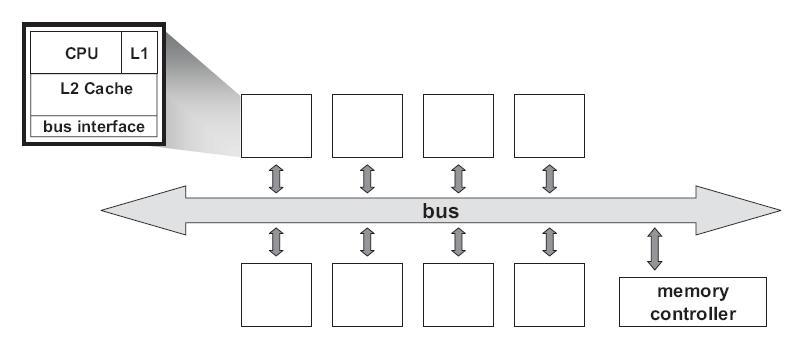CSC/ECE 506 Spring 2010/chapter 8: Difference between revisions
No edit summary |
No edit summary |
||
| Line 11: | Line 11: | ||
At any point in logical time, the permissions for a cache block can allow either a single writer or multiple readers. The '''''coherence protocol''''' ensures the invariants of the states are maintained. The different coherent states used by most of the cache coherent protocols are as shown in ''Table 1'': | At any point in logical time, the permissions for a cache block can allow either a single writer or multiple readers. The '''''coherence protocol''''' ensures the invariants of the states are maintained. The different coherent states used by most of the cache coherent protocols are as shown in ''Table 1'': | ||
The first widely-adopted approach to cache coherence is snooping on a bus. We will now discuss how some real time machines by '''Intel''' and '''AMD''' maintains cache coherence using '''''snooping based coherence protocols'''''. For more information on snooping based protocols refer to Solihin text book Chapter 8. | |||
Revision as of 21:50, 26 March 2010
Implementation of bus-based coherence protocols in real machines
Introduction
Most parallel software in the commercial market relies on the shared-memory programming model in which all processors access the same physical address space. And the most common multiprocessors today use SMP architecture which use a common bus as the interconnect. In the case of multicore processors (CMP) the SMP architecture applies to the cores treating them as separate processors. The key problem of shared-memory multiprocessors is providing a consistent view of memory with various cache hierarchies. This is called cache coherence problem. It is critical to achieve correctness and performance-sensitive design point for supporting the shared-memory model. The cache coherence mechanisms not only govern communication in a shared-memory multiprocessor, but also typically determine how the memory system transfers data between processors, caches, and memory.
Figure 1 : Bus-Based symmetric multiprocessors
At any point in logical time, the permissions for a cache block can allow either a single writer or multiple readers. The coherence protocol ensures the invariants of the states are maintained. The different coherent states used by most of the cache coherent protocols are as shown in Table 1:
The first widely-adopted approach to cache coherence is snooping on a bus. We will now discuss how some real time machines by Intel and AMD maintains cache coherence using snooping based coherence protocols. For more information on snooping based protocols refer to Solihin text book Chapter 8.
